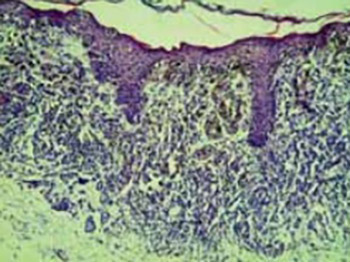Correlation of cell cycle regulatory proteins (p53 and p16ink4a) and bcl-2 oncoprotein with mitotic index and thickness of primary cutaneous malignant melanoma
DOI:
https://doi.org/10.17305/bjbms.2010.2660Keywords:
melanoma, skin, cell cycle regulators, bcl-2, melanoma progressionAbstract
The purpose of the study was to determine the frequency of expression p53 and p16INK4a proteins and bcl2- oncoprotein in malignant skin melanoma and to determine their correlation with the proliferative index and tumor thickness. The study involved 53 patients: 27 (51%) male and 26 (49%) female. Mitotic index showed a correlation with p53 protein expression, a negative correlation with p16INK4a protein expression. Statistically significant correlations were determined between the Breslow tumor thickness, Clark invasion level and p53 protein expression, as well as Breslow tumor thickness and bcl-2 oncoprotein expression (p<0.05), whereas there was no correlation between the p16INK4a protein expression and melanoma thicknes and Clark invasion level. Overexpression p53 protein and bcl-2 oncoprotein, with the loss p16INK4a protein of expression in the nodular melanoma, confirms a frequent loss of function of these tumor suppressor gene and oncogene, and indicates a vertical tumor growth phase. The loss of tumor suppression function the p53 protein and bcl-2 oncoprotein overexpression in cutaneous melanoma correlates with larger tumor thickness, whereas the overexpression of mutated p53 protein and loss p16INK4a protein of expression indicate a higher proliferative tumour potential. Therefore, these evaluated proteins may be the aggressive biological tumour activity markers.
Downloads














